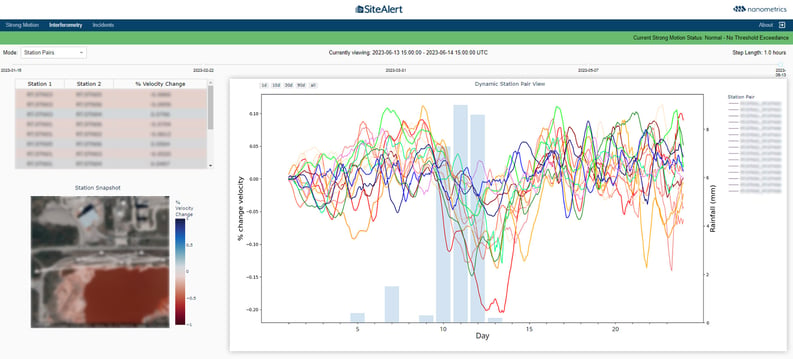In the field of structural monitoring, the ability to detect and assess changes in real-time is crucial for ensuring the integrity and safety of various earth structures. Traditional monitoring methods often focus on point measurements, leaving a gap in understanding what occurs between sensors. However, a groundbreaking technique called ambient noise interferometry offers a proactive solution by providing insights into structural changes and velocity variations over time. This innovative approach enables a more comprehensive understanding of earth structures, such as tailings dams, open pit mine slopes, and earth embankments, ultimately leading to enhanced safety measures.
UNDERSTANDING AMBIENT NOISE INTERFEROMETRY
Ambient noise interferometry is a powerful tool that goes beyond traditional seismic monitoring. By analyzing ambient noise signals traveling between sensors, it unveils variations in velocity within the structure itself. This method provides a unique view into the structural changes and velocity perturbations, allowing for early detection and proactive monitoring. It enables a more comprehensive understanding of the health and integrity of various earth structures, making it an invaluable asset for long-term, ongoing, and short-term monitoring projects.
FOCUS ON TAILINGS DAM MONITORING
One primary use case for ambient noise interferometry lies in the monitoring of tailings dams. With its ability to detect velocity changes over time, this technique provides a reliable means to assess the structural health of tailings dams. Whether it's monitoring inactive dams, ongoing surveillance of active dams, or short-term monitoring during deconstruction, ambient noise analysis offers valuable insights into the integrity of these critical structures. The same principles and techniques can be applied to other earth structures, including open pit mine slopes, dry stack tailings, earth berms, slopes, tunnels, caves and natural slopes.
DELIVERING STRUCTURAL HEALTH MONITORING SERVICES
At Nanometrics, we are committed to providing comprehensive solutions for structural integrity monitoring. Our Structural Health Monitoring Service utilizes ambient noise interferometry and strong motion analysis techniques to deliver real-time insights into structural changes. Leveraging our state-of-the-art data processing capabilities, we offer an interactive view of velocity trends over time through our SiteAlert platform. This allows our customers to visualize significant variations beyond normal ranges, prompting further investigation and action when necessary. Our Data Center team also reviews interferometry data products on a daily basis, ensuring continuous monitoring and timely escalation of any significant deviations. Going forward, we are continuing to expand and invest in our capabilities to provide an industry leading live interactive solutions for customers globally.
IN CONCLUSION
Ambient noise interferometry represents a significant advancement in the field of structural monitoring, offering a proactive approach to detect and assess structural changes. By harnessing this innovative technique, Nanometrics aims to provide industry-leading solutions for tailings dam monitoring and other geotechnical structures. With our Structural Health Monitoring Service and the power of real-time data analysis through SiteAlert, we strive to ensure the safety and integrity of critical structures while delivering a positive customer experience. As we continue to evolve and expand our capabilities, ambient noise interferometry will play a pivotal role in transforming the way we monitor and safeguard geotechnical structures.



